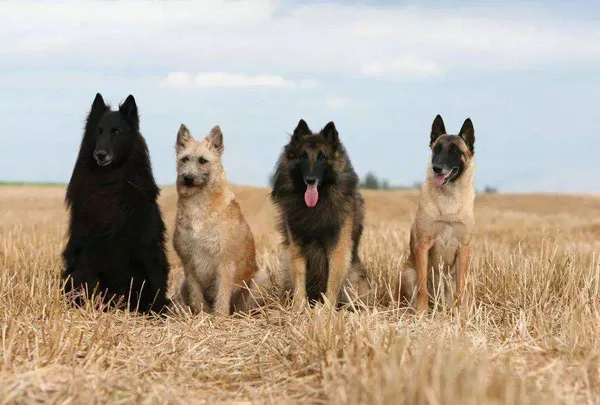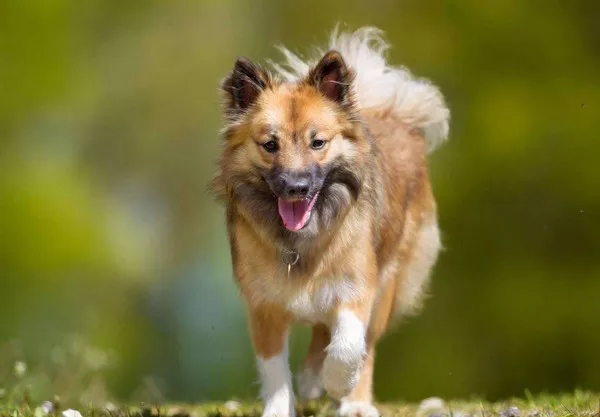The Green Cheek Conure is one of the most popular parrot species in the pet world. Known for their vibrant colors, playful nature, and affectionate personality, Green Cheek Conures make wonderful companions for bird enthusiasts. However, before diving into what makes these birds so appealing as pets, it’s essential to understand where they come from and what their natural habitat is like.
In this article, we will explore the natural history of the Green Cheek Conure, its geographic origins, and the conditions of the environments where they thrive. We’ll also examine how their wild habitat influences their behavior and needs as pets, giving you a well-rounded understanding of these beautiful birds.
What Is a Green Cheek Conure?
The Green Cheek Conure (Pyrrhura molinae) is a small parrot species native to South America. They are part of the conure family, a group of small to medium-sized parrots that are known for their sociability, intelligence, and strong personalities. Green Cheek Conures are typically around 9 inches (23 cm) in length, with a stocky build, short tail, and a signature green plumage with a red or maroon tail.
They are often confused with other conures, but the Green Cheek is unique due to its charming personality, calm demeanor, and the fact that it is one of the quieter members of the conure family. This makes them a popular choice for people who want a pet bird but are sensitive to loud noises.
Natural Habitat of Green Cheek Conures
Green Cheek Conures are native to the forests of South America, specifically in the region that includes Brazil, Paraguay, Argentina, and parts of Bolivia. They are found in the lowland forests of southeastern Brazil and northern Argentina, where the climate is warm and humid.
Their natural environment is characterized by dense woodlands, riverbanks, and forest edges. These birds prefer areas that have a mix of open spaces and dense foliage where they can forage for food and find shelter. They are typically found at elevations ranging from sea level up to about 3,280 feet (1,000 meters) in the wild, where they enjoy a temperate to subtropical climate.
In these forests, Green Cheek Conures are often seen in small flocks, and they usually make their homes in the hollows of trees, particularly in the dead sections of tree trunks where they can nest. The conures are highly social birds, so it is not uncommon for them to form large colonies with other conure species or even different types of parrots.
Climate and Weather Conditions
The climate in the areas where Green Cheek Conures originate is typically warm, with temperatures ranging from 75°F to 85°F (24°C to 29°C). Rainfall in these regions is frequent, especially during the wet season, with tropical thunderstorms being a common occurrence. This rainfall helps maintain the lush, green vegetation that makes the birds’ homes so suitable for nesting and foraging.
Because the birds are accustomed to this environment, they are well-adapted to humidity, high temperatures, and regular rainfall. This preference for warmer climates is an important factor to consider when caring for a Green Cheek Conure in captivity. They thrive in environments where the temperature does not drop below 60°F (15°C), and they require proper humidity levels to mimic their natural habitat.
The Green Cheek Conure’s Social Structure in the Wild
In their natural habitats, Green Cheek Conures are social birds that often live in small flocks, sometimes only consisting of five to eight individuals. These flocks are usually composed of family members, and the bonds between birds within a flock are very strong. Flocks of Green Cheek Conures communicate with each other through soft vocalizations and body language, which are important for maintaining group cohesion.
While they are social, Green Cheek Conures are not as loud or boisterous as some other parrot species. This makes them well-suited to life in the dense forests, where they communicate using subtle calls rather than loud screeches. In the wild, their diet consists of fruits, seeds, nuts, berries, and vegetation. They are skilled foragers, using their sharp beaks to crack open hard seeds and nuts.
Unlike some parrots that prefer to live in large, noisy colonies, Green Cheek Conures are more territorial and prefer the company of a small group of birds. They use their environment’s natural resources to create nests and roost in tree cavities, where they are protected from predators like hawks and large birds of prey.
How Green Cheek Conures Adapt to Their Environment
Green Cheek Conures are well-adapted to life in the wild, as their physical and behavioral traits help them thrive in their environment. One of the most notable characteristics of the Green Cheek Conure is its ability to climb and forage with agility in the trees. They have strong feet and zygodactyl toes (two toes pointing forward and two pointing backward), which allow them to hold onto branches, vines, and fruit with great dexterity.
Their ability to navigate dense forests and the high canopy gives them access to a wide variety of food sources, including fruits, berries, seeds, and flowers. Their diet is omnivorous, and they may even eat small insects or larvae. In addition to foraging for food, Green Cheek Conures also use their strong beaks to crack open seeds and nuts, which are a major part of their diet in the wild.
Green Cheek Conures are also known for their ability to adapt to changing environments. In areas where deforestation has reduced their natural habitat, these birds have learned to live in modified environments, such as agricultural lands, parks, and even urban areas. This adaptability has helped them survive in regions where the wild forest once dominated.
The Role of Green Cheek Conures in Their Ecosystem
In their natural habitat, Green Cheek Conures play an important role in maintaining the ecological balance. As frugivores, they help disperse seeds by eating fruits and later excreting the seeds in different locations. This contributes to the growth of new plants and trees, which is vital for maintaining biodiversity in their ecosystem.
Additionally, Green Cheek Conures help to control insect populations by occasionally consuming insects, larvae, and other small invertebrates. While they may not be considered top predators, their contribution to the food chain is important for maintaining the health of the forest. They also serve as prey for larger animals, such as raptors and snakes, helping to support the food web.
The Green Cheek Conure as a Pet: How Their Wild Origins Influence Their Behavior
Green Cheek Conures are highly social, affectionate birds, and this is largely influenced by their wild upbringing. In the wild, they form strong family bonds, and their interactions with one another are characterized by playful, loving behavior. These traits carry over into their domesticated lives, making Green Cheek Conures popular as pets.
However, it’s important to remember that their wild origins have shaped certain aspects of their behavior, which can impact their care requirements. For example, Green Cheek Conures require a lot of social interaction and mental stimulation. If left alone for too long, they may become bored, anxious, or depressed, leading to destructive behaviors like feather-plucking or excessive vocalization. This is why it’s crucial for pet owners to spend time with their Green Cheek Conure every day, providing them with toys, activities, and companionship.
In addition, their natural habitat’s warm and humid conditions mean that they do best in environments where temperature and humidity are carefully controlled. Pet owners should provide their Green Cheek Conures with a safe, comfortable space to live in, with the right temperature (ideally between 70°F and 80°F) and adequate humidity (40-60%).
The Impact of the Green Cheek Conure’s Wild Origins on Conservation Efforts
Although Green Cheek Conures are not currently listed as endangered, their natural habitats are under threat due to deforestation, habitat destruction, and the illegal pet trade. While these birds are not at immediate risk of extinction, efforts are being made to conserve the forests where they live and protect their environment from further degradation.
Conservationists are working to preserve the remaining rainforests and tropical woodlands where Green Cheek Conures thrive. These efforts include protecting areas of high biodiversity, creating wildlife corridors to allow safe migration for animals, and advocating for the reduction of illegal pet trade practices that harm wild populations.
Conclusion
Green Cheek Conures are delightful, charming birds that make great pets due to their affectionate nature and playful personalities. Understanding their natural habitat in the wild is essential for providing them with the proper care and environment in captivity. These birds are native to the forests of South America, where they live in small, social groups and thrive in warm, humid climates.
By understanding their origins, social behavior, and habitat preferences, pet owners can better meet the needs of their Green Cheek Conures and ensure they live happy, healthy lives. While these birds have adapted well to life in captivity, it’s important to remember that they are wild creatures at heart, and their natural instincts still influence their behavior. By respecting their wild origins and providing the right care, Green Cheek Conures can make wonderful, loving companions for years to come.
Related Topics:























